S,M,L,XL: not (only) an object
massa critica | verónica melendez
A couple of months ago I was at Madrid’s Escuela Técnica Superior de Arquitectura, and as in those days several Ph.D candidates were discussing their theses, I had the opportunity to follow a couple of them, one of which was Verónica Melendez’s brilliant work on S,M,L,XL, titled “Gestión Intelectual de las Prácticas Comunicativas en Arquitectura. S,M,L,XL: El Gran Evento”. Verónica has developed a deep and intelligent analysis of this revolutionary book, unfolding its significance not just as a monograph, but as a multidimensional project that redefined both the professional trayectories of its (many) authors and the practice of architecture itself, while anticipating in its making the networked ways of doing that have now become common. I absolutely had to publish some of those thoughts on 011+, so I asked Verónica to summarize (part of) her research in the form of a blog post. This is the – juicy – result of such effort, for which I am grateful to her. Davide Tommaso Ferrando
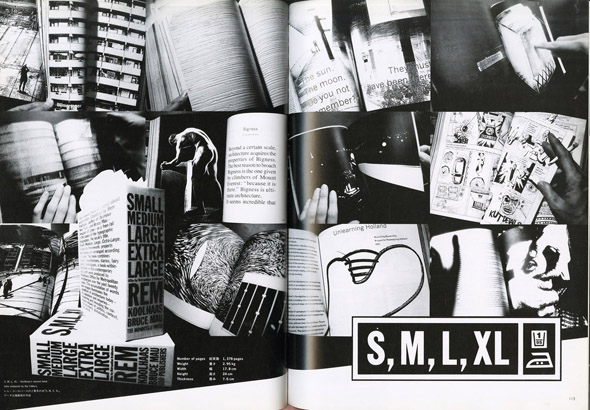
«S,M,L,XL. A big book that revived the monograph and redefined the role of graphic design»1
That is the way this hefty monographic volume, about the latest 20 years of OMA -Office for Metropolitan Architecture-, was introduced as one remarkable event in the 25th anniversary of the magazine Metropolis [Fig. 1]. Actually, it was selected to commemorate the year 1995. The book shares this historic period with many other outstanding landmarks and relevant people, precisely one per year, among others the Guggenheim Museum in Bilbao, 09/11, or the brand new American “Starchitect Condos”. All those featured events were presented together with some notes. As for the monograph, some topics were suggested: “book as brand, book as object, book as doorstop”. S,M,L,XL became a reference, a formula that many others would wish to reproduce afterwards.
The magazine also described this volume as the work that catapulted both Rem Koolhaas and the designer Bruce Mau into design stardom, getting raves from Time magazine. Given this interest in showing post-book effects we might think this magazine offers a somewhat banal approximation within a random celebratory taxonomy. Yet it shows something else. Particularly about this heavy book, the magazine soon recalls how it fostered co-authorship between the architect and the graphic designer, as it also helped to revisit the notion of collaboration. Additionally, it highlighted their strategy of reverse editing – based on addition instead of reduction -, and how Mau took advantage of the book to open a debate about new ways of being a graphic designer. Retrospectively, and from then on, it seems everyone thinks they can make their own, the magazine remarks skeptically.
Fig. 1. Cover and pages of Metropolis, 25th Anniversary, 2006
Useful besides Lifeless
Reviews like this complete the image of the monograph, which belongs to a period of “coffee-table books”. In other words, publications that showed high-quality images printed on glossy paper, a noticeable progress facilitated by the latest technology. Full-color pictures, or even more sophisticated and precise binding systems are some of the main features of these then trendy books. Another particularity is the lack of need to be really useful, or read. They are named as such because they can just decorate their owners’ “coffee-tables” at home, or eventually at work, while these perfect adornments let others get an approximate idea of people’s interests, somehow “accessorizing” and completing their social identity. That’s the understanding of these volumes as “objects”. Soon after its publication, S,M,L,XL was compared with other equally hefty volumes, whether monographic or thematic, about architecture, art or design. It was confirmed progressively that a new kind of “book” had been born, one meant to be useful, but only for its symbolic qualities.
The anticipation of S,M,L,XL within this trend enhanced the idea that this specific book was an editorial landmark, and therefore a reference for others to come. Its assimilation as a piece, or as an object, might had been, even unconsciously, endorsed by the media anytime they made use of it literally, by reproducing double-page spreads, but barely adding any critic commentary next to it. Maybe too much intuition was demanded to the audience, if any deeper understanding of the book was expected. These direct captures were published in international magazines such as ANY, El Croquis or Kenchiku Bunka, by the time of its publication in the mid 1990s [Fig. 2]. Even some artistic interpretations have been produced, turning some key books of architecture into sculptures [Fig. 3]. Similarly, as an achievement, S,M,L,XL was introduced by the renowned TV presenter Charlie Rose2. He interviewed Koolhaas twice in little more than a year time for his American Late Show. Once by the end of 1994, when the volume was still a dummy -a “ghost of the real book”, Monacelli Press explained about this hardcopy-, and again in March of 1996, when S,M,L,XL had been finally printed. On both occasions Charlie Rose smiled, and repeatedly lifted the book, regardless the stage of its development [Fig. 4]. Inevitably, this editorial work was about to become the ultimate referential object.
Fig. 2. S,M,L,XL literally inserted in different media / ANY 5, El Croquis 79, Kenchiku Buncha 579
This same interest in selling an object might be mistakenly read in Bruce Mau’s representation of his own book, at least given the repetition of this strategy in BMD’s website [Fig. 5], or in their first monograph, Bruce Mau Design: Lifestyle, in which they included again double-spread captures of the book. Moreover, BMD presented professional photographs of the book placed as an actual “coffee-table book”, or worse, as a pillow under a woman’s head [Fig. 6], then displacing its functionality in favor of more domestic utilities. According to this scenario one might not find traces of deeper scopes in the representation of the book, if it weren’t for the extra imagery they provided to the audience. BMD aimed to dismantle the idea of S,M,L,XL as a simple “object”, from the moment when they exposed also part of the B-side of the volume, namely its process, from production to correction and revision stages. They did it by sharing pictures of the team and the book in progress, full of adhesive notes of different colors [Fig. 7]. Perhaps, presenting S,M,L,XL in this non-conventional way, and confronted with its image as an impressive still object, contributed to the perception of this volume as a kind of twofold animated object. The fact that, still today, we are analyzing this volume keeps this non-book alive. What is more, and less commented, this monograph “existed” also long before its finalization for many reasons, and particularly because it became useful from within besides being apparently lifeless as an object.
Fig. 3. Sculptures, Carnets Collection, © Eddy Sykes
[JS]: Could you say that S,M,L,XL marks the end of adolescence in your career?
[RK]: I don’t know of what, but it was definitely the end of something. (…) It’s interesting that it came at the moment that we questioned the identity of OMA, or at least doubled it with that of AMO3.
The book meant a turning point for its authors, to the extent that it settled the basis for a new time even in terms of organization. During the process of production of the book Bruce Mau carried out an important transformation. They did it by renewing the type of professional profile of his office, shifting towards a different approach in the field of design in which working “only” as a graphic designer was not an option he would consider. Likewise, as we can read above, the book accompanied a change in OMA. Koolhaas has never omitted the coincidence of this editorial process with the need to reconsider the nature of the office4. As he would admit later, OMA had entered a period of complete renovation.
S,M,L,XL meant much more than a heavy volume for OMA and BMD. Moreover, the book had exceeded for the authors all the expected primary functions, as an object or as the compilation of a number of architectural results, and therefore, even fulfilling the main prerequisites to become a book-object, critics such as Charles Jencks assured that this volume might be the exception that confirms the rule. S,M,L,XL was contributing to the evolution of the traditional format of the monograph in architecture.
“Charles Jencks writes: ‘The extra-heavy text five inches thick and weighing over five pounds replaced the coffee table book in the 1990s. Foster, Tschumi, Holl, MVRDV et al. followed Rem Koolhaas’ S,M,L,XL. The figure of the old testament prophet reading the truth is Madelon Vriesendorp’s Christmas card to her husband in 1995.’ (See Chapter 13)”5
Fig. 4. Charlie Rose TV Show, 1994 & 1996. Captions from the program
Technological besides Classical
S,M,L,XL is like a machine. Koolhaas confirmed that in its presentation at the AA in 1995. The book not only endorsed a shift on the trajectories and offices of its main authors. It also worked as an artifact. It changes every 10 pages, although sometimes the book is a book, Koolhaas remarked. Similarly, the book can be read in any way6. Given these considerations we could argue that S,M,L,XL is similar to an interactive and sophisticated object. In other words, it gets much closer to the definition of book-machine. Moreover, evidences and interviews, carried out as part of a research process, reveal that the book produced an influence on several OMA projects and exhibitions, as it occurred the other way around. The book was reversely affected by the everyday routine at OMA7.
Generally, a traditional monograph used to be a compilation of works, and eventually some texts. That is, a kind of biography of an office of architecture. But S,M,L,XL performed differently. It worked more like a medium, as a laboratory where different contents and agents could take part in a regime of hybrid authorship, as the acknowledgements of the book admit. All those individuals immersed in the production and reception of S,M,L,XL equally contribute to the full construction of this volume. And in so doing, the book turned into a mechanism for exchange and interaction. In the midst of the global era and the first years of the 21st century, other monographs such as MOVE (UNStudio, 1999) or KM3 (MVRDV, 2005) increased the presence of big compilations of architecture, and ideas, made by more than one author. These were not the only hefty pieces. The Metapolis Dictionary of Advanced Architecture (2001) belongs also to this series for showing even more explicitly a system a cross-references, allowing for numerous and simultaneous interpretations indeed. These examples of “multiplicity” remind us of thinkers like Manuel de Landa, Deleuze and Guattari or Alain Badiou, who expressed the need to let interferences and overlapped conversations to happen.
Fig. 5. S,M,L,XL presented in Bruce Mau Design website © BMD. No longer available
Voices, contents, resources or key contemporary themes and questions, all of that is fundamental in S,M,L,XL, this atypical monograph organized by sizes. Just a few critics grasped that, presenting the book as an advanced object of technological appearance. Anthony Vidler described it as a CD-REM-based program by Koolhaas Software, which could run on the minimum amount of REM. In other words, without the author, thus potentially available to students and home office users with limited hardware8. He warns the potential users that in order to activate it one should not attempt to run it with limited memory or with an old hard disk. Similarly, Toyo Ito considered S,M,L,XL to be closer to a television news show, or even to a mechanism that in a way makes more suggestive of electronic media than the videos and CD-ROMs9. The main challenges of S,M,L,XL, in the midst of the 1990s decade, might have been the tough coordination among now old instruments, Xerox, Fax or postal services like FedEx [Fig. 8], or the not insignificant achievement of binding such a thick volume successfully. But strangely, these still analogue factors were enough to produce this technology-like result. Or we should say a machine, as Koolhaas stated.
Fig. 6. S,M,L,XL presented in BMD monograph “LifeStyle” © Venus Veldhoen
More recent editorial references made by OMA-AMO help to analyze if a change actually occurred with S,M,L,XL. If we think of the issue of Domus called “Post-Occupancy” (2006), in which Rem acted as guest-editor, we should not ignore that this publication served as a pretext to revisit a number of projects, from a different perspective. Interviewed by Colomina, Koolhaas didn’t dismiss her assumption that internet10 had been used as a referential system for this volume. Not surprisingly, it may have worked also for S,M,L,XL a decade before, although limited to the technology of its time. Still, no matter how simple their resources were in the mid 1990s, for this monograph was conceived as if it were a smart device, ready to activate layers of criticism and thought, altogether. This assumption is not made for granted. It is not an hypothesis. When it is put in perspective, of about 20 years now, the editor Jennifer Sigler remembers the process as similar to the performance of a system based precisely on cross-references, on hyperlinks11, which today we call internet.
Who remembers having explored the CD-ROM delivered with “Post-Occupancy”? Is it really necessary to incorporate an electronic device to a magazine in order to make it more technological? It is not even clear for all the readers of “Post-Occupancy” that it was not a book, but the first issue of a series launched by the Italian magazine Domus, called “Domus d’autore”, although it had no continuity whatsoever afterwards. Given its unorthodox but intriguing narrative we can question if formats might be somehow irrelevant today, since the point of this issue of Domus conducted by Koolhaas and AMO was to approach architecture in different ways. They aimed to talk about buildings, but also to address topics like users experiences, occupation and use, surveillance, footage and records, or even media coverage, and indirectly also representation. Retrospectively, we could argue that S,M,L,XL had an impact, perhaps being the main responsible for this shift of direction in the utilization of formats, particularly in future expectations about editorial works. In this time of technological excess, perhaps it would be convenient to question if all forms of progress assure efficiency. Is any new format appropriate for any goal, or at least for the development of criticism? Do we know how to deal critically with advanced media, and devices, in design processes? Yet, what kind of future is yet to come for traditional formats? Probably, we should remain alert to those who still trust and produce books.
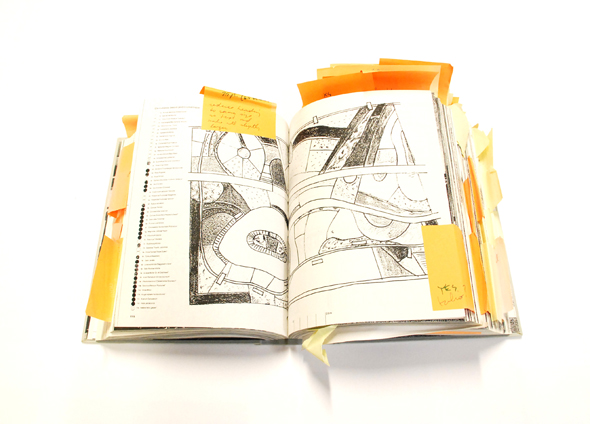
Fig. 7. Latest dummies found at BMD Archives, Toronto. Pictures © Verónica Melendez
Necessary tools for Intellectual Management
We could conclude speculating, can a media-based machine be a space for criticism12? Could it be used for “Intellectual Management13” in the fields of Architecture and Design? The technological references alluded in the reviews of S,M,L,XL were just anticipatory, or perhaps a clear wake up call, for an urgent change in the role that editorial production should play for architecture in the 21st century. Also, they suggested new potentials in management, criticism and articulation of thought, much likely from a strategic perspective, or even pragmatic but not necessarily calculated, as we can imagine it could be the case of S,M,L,XL. Perhaps this amplified instrumentality just happened with this book, to the extent that it needed the readers to be completed. The critics and the authors suggested it: one could make a free use of this volume. Reversely, and in so doing, the book invited to enter more than it demanded to be grasped completely. It could be approached anyway, hence a kind of device designed to manage information, architecture and thought had been settled. It would be based on the premise that it should be somewhat intellectual, given the heavy load of ideas and criticism included in the volume, even if it was performed as such, as a classical format like this, so limited to descriptive or promotional functions in the recent past.
Rem sustained, and still confirms14, that the production of publications -and writing-, work as an actual way out of other architectural constrains. This “second life” of the architect is a chance to be someone else. In a way, it serves as a formula to access architecture through alternative critical positions. Thought might be more easily activated when liberated from the pressure imposed in the construction and completion of built works, to the extent that books may resemble projects more than they look like objects. Eventually, the final materialization of S,M,L,XL turned this monograph into an object given its physical qualities. It needed to be physical, indeed, to be enhanced as a legitimating instrument. Beyond that it became, in fact, a kind of accelerator of intuitions and connected processes. But yet its value as a functional unit is far more enriching than its presence as a heavy though extremely decorative block. S,M,L,XL is just a project, for destabilizing the limits and encouraging the formulation of new methodologies and new modes of production and consumption of architecture. It is performative because it engaged the discipline differently, in a kind of productive fashion for its authors, who rebuilt their offices entirely. It was an instrument, no matter what physical shape it acquired or editorial category it represented.
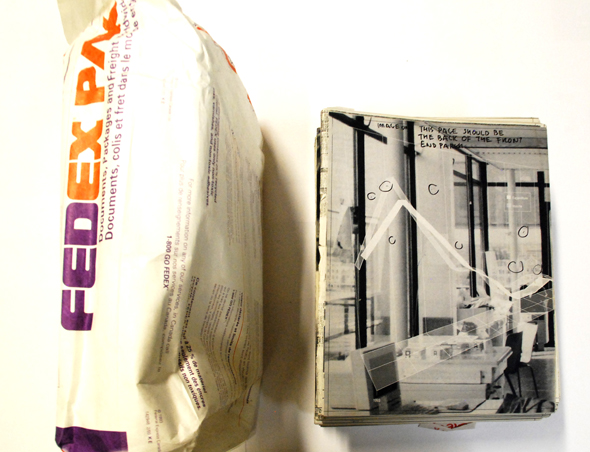
Fig. 8. S,M,L,XL process material, found at BMD Archives, Toronto. Picture © Verónica Melendez
Said all this, and from this perspective of “a book as a project”, we could see now the monograph as a space for multiple dialogues, a platform that, maybe secretly, undermined the idea of book-object. It became a reference for its audience, a tool to explore new out-of-the-box formats. For OMA and BMD, it helped to foster a new time, to share with the audience their new agendas, and to start to consolidate a routine of communicative practices for which the idea of book was still to yield unexpected results. S,M,L,XL not only came before “Post-Occupancy”, it also made way for Al-Manakh, Content, Project Japan and other publications, all often under AMO signature. This whole editorial legacy is all but lifeless for Rem Koolhaas. Consequently, maybe we should be suspicious and remain alert, particularly after the moment in 2012 when Rem Koolhaas presented his agenda for the next years. It was then based on 4 (unrealized) ambitions15. Not surprisingly, perhaps, 2 of them were books in progress.
Verónica Melendez
Notes
1. NANCY NOWACEK, 1995: S,M,L,XL, in “Metropolis” Special Anniversary Issue 1981-2006, New York 2006, p.183.
2. REM KOOLHAAS, CHARLIE ROSE, An interview with Rem Koolhaas, US Talk Show – Charlie Rose, USA Dec.1994 and March 1996.
3. REM KOOLHAAS, JENNIFER SIGLER, Rem Koolhaas: 2000, in “Index” magazine, 2000.
4. REM KOOLHAAS, ALEJANDRO ZAERA, The day after: a conversation with Rem Koolhaas, in “El Croquis” 79, OMA / Rem Koolhaas 1992-1996, El Escorial 1996, pp. 8-25.
5. CHARLES JENCKS, This Is Not Architecture: Media constructions, Routledge & Kester Rattenbury (ed), Londres & Nueva York 2002, p.3.
6. REM KOOLHAAS, presentation of the monograph “S,M,L,XL”, Architectural Association, London Dec. 1995.
7. VERÓNICA MELÉNDEZ, Acciones invisibles detrás de S,M,L,XL: Distracción + Ensayo + Infiltración, Digital Proceedings Critic/all – I International Conference on Architectural Design and Criticism, ETSAM, Madrid Jun. 2014.
8. ANTHONY VIDLER, S,M,L,XL: Book Review, in “ANY” 9: The Bigness of Rem Koolhaas, Urbanism vs Architecture, New York Nov. 1994, pp. 58-59.
9. TOYO ITO, Architectural Incidents Replete with Fantasy: S,M,L,XL by Rem Koolhaas, in “A+U”, Japan Nov. 1996, pp. 131-133.
10. REM KOOLHAAS, BEATRIZ COLOMINA, La Arquitectura de las Publicaciones. Conversación entre Beatriz Colomina y Rem Koolhaas, in “El Croquis” 134+135, El Escorial 2007.
11. JENNIFER SIGLER, Interview at the GSD, Harvard University, Cambridge 2012.
12. PAULA V. ÁLVAREZ, Formats, Criticism, Project: Working Table Formats #1, in Book of Findings, Critic/all – I International Conference on Architectural Design and Criticism, DPA-Prints, Madrid 2015, pp. 113-121.
13. VERÓNICA MELÉNDEZ, Gestión Intelectual de las Prácticas Comunicativas en Arquitectura. S,M,L,XL: El Gran Evento, Tesis Doctoral, UPM, Madrid 2016.
14. REM KOOLHAAS, Imposed Coherence: in conversation with the RSA, Rice School of Architecture, Oct. 2012.
15. REM KOOLHAAS, Agenda: 4 Ambitions, Charles Jencks Lecture, RIBA, London 2012.
Related Posts
Questo sito usa Akismet per ridurre lo spam. Scopri come i tuoi dati vengono elaborati.

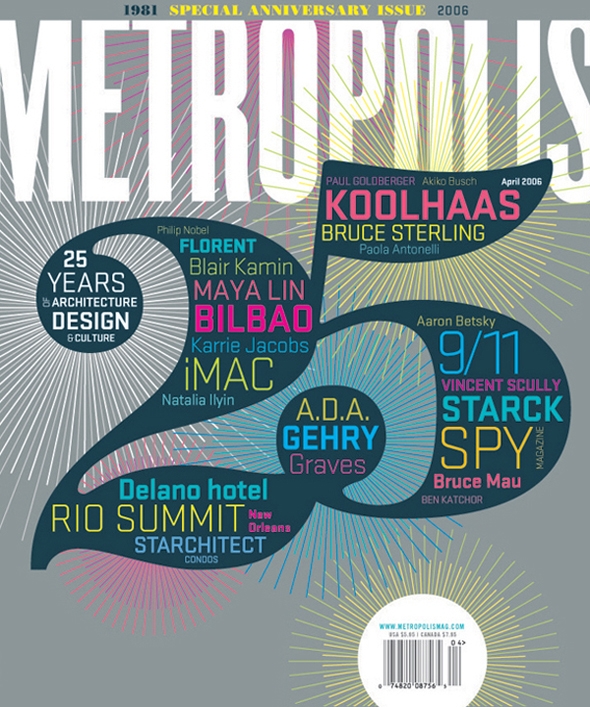
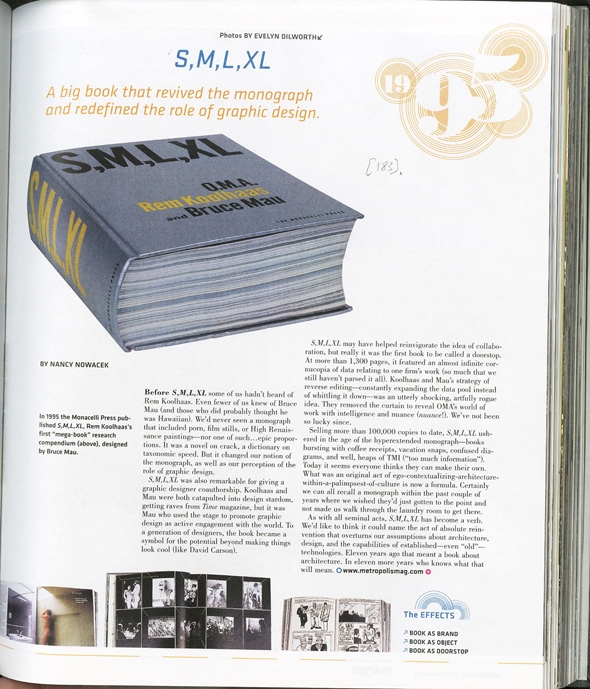
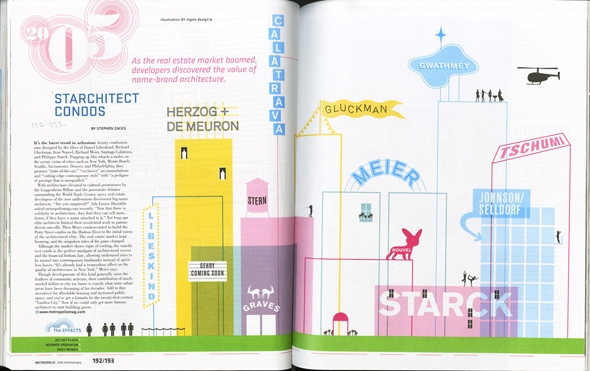

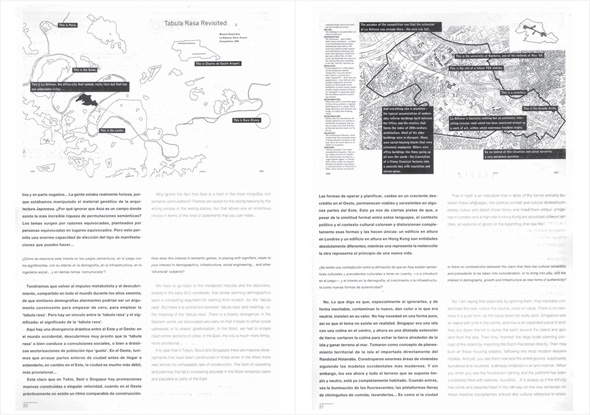
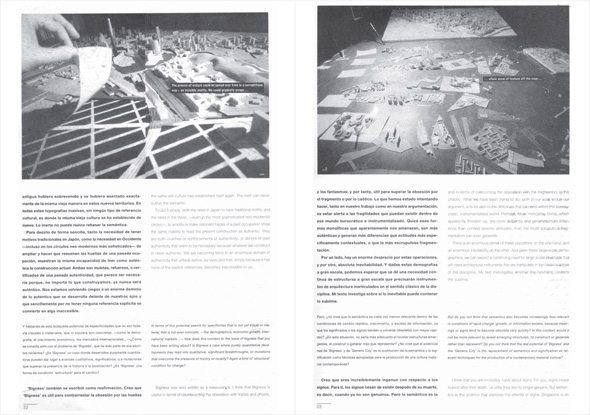
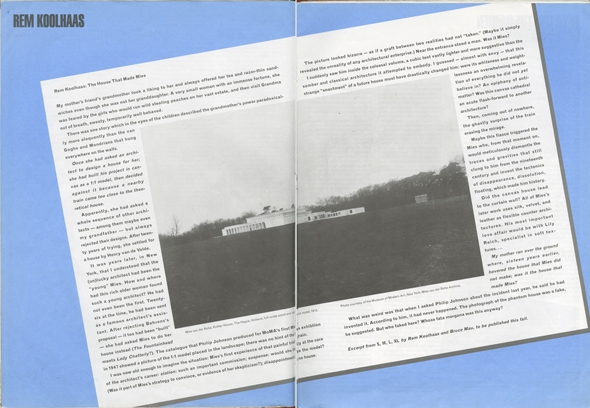
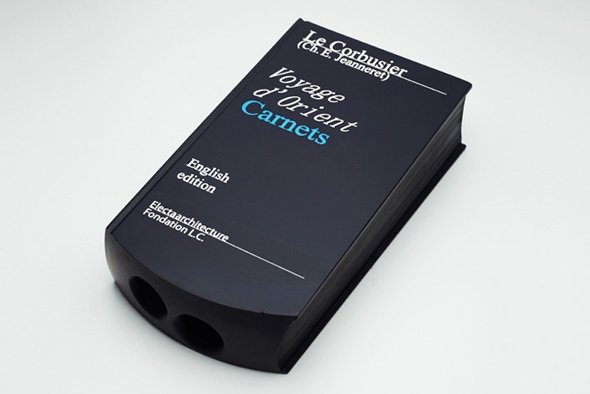
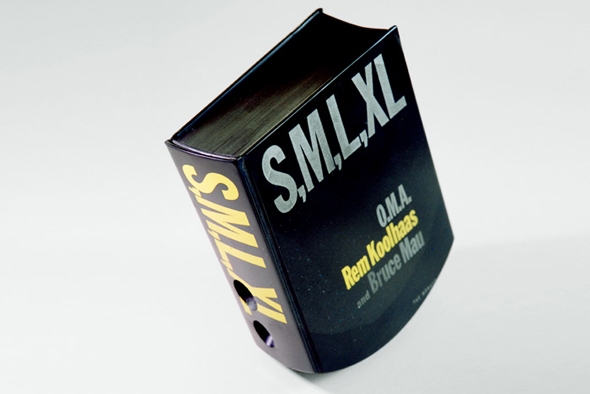
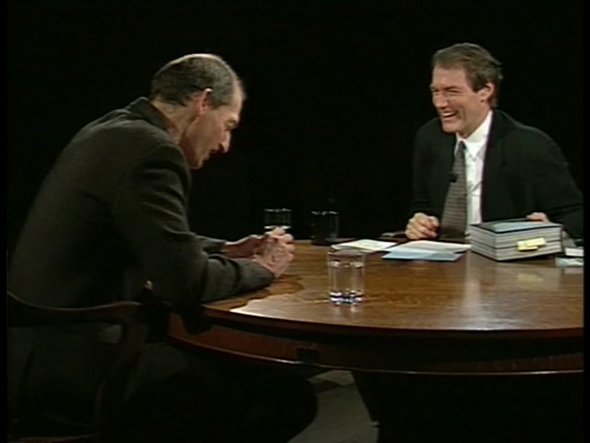
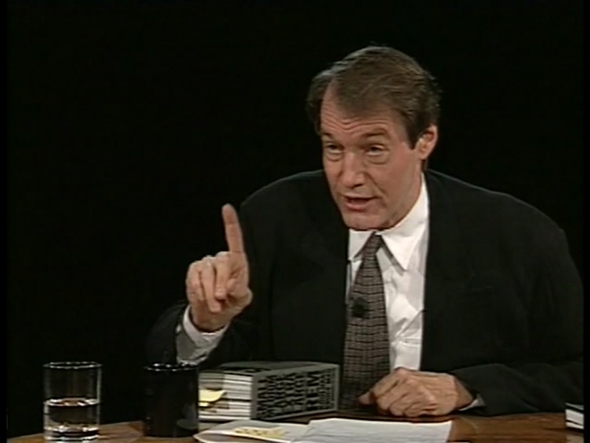
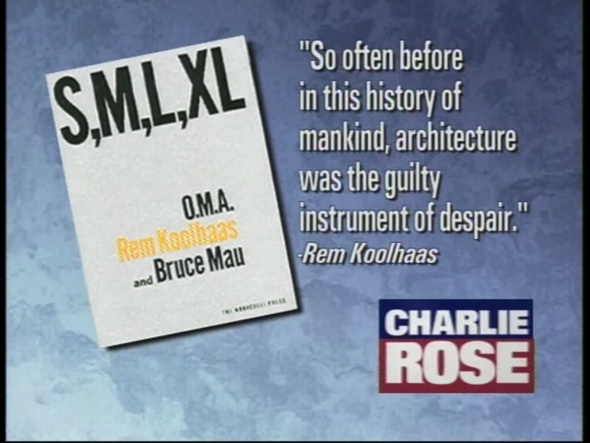
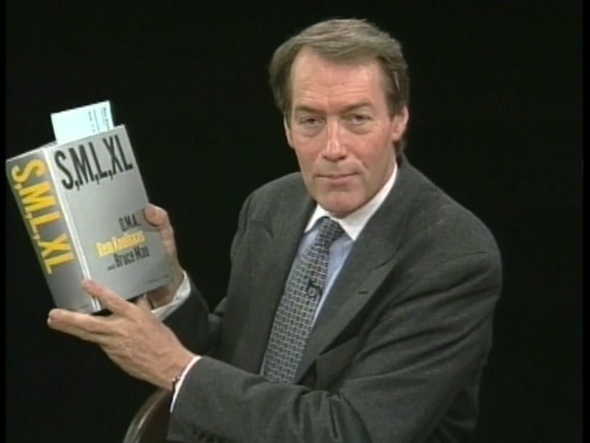
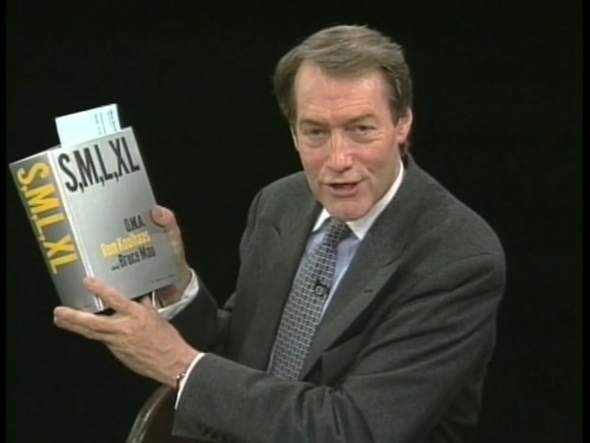
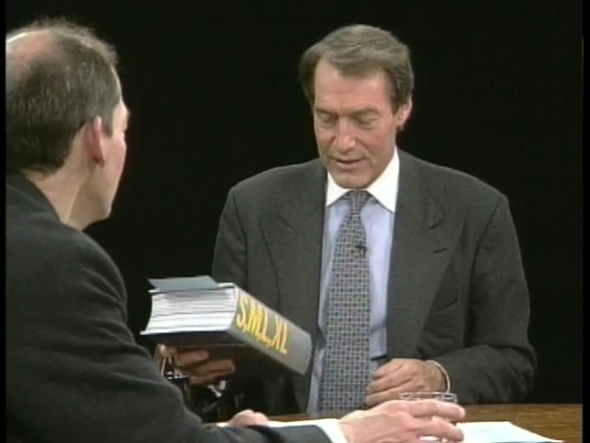
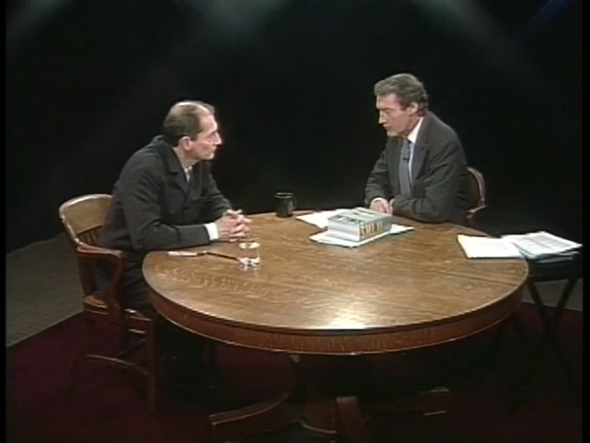
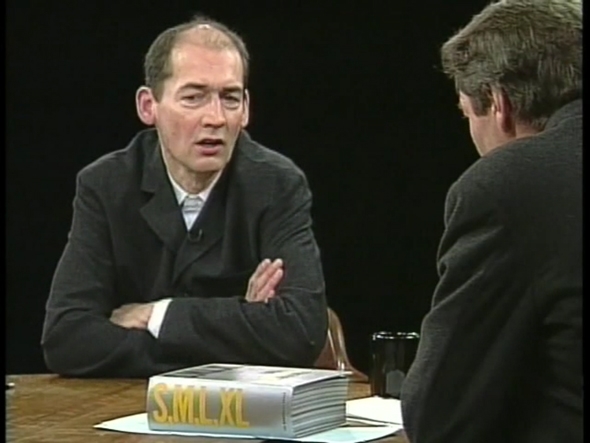
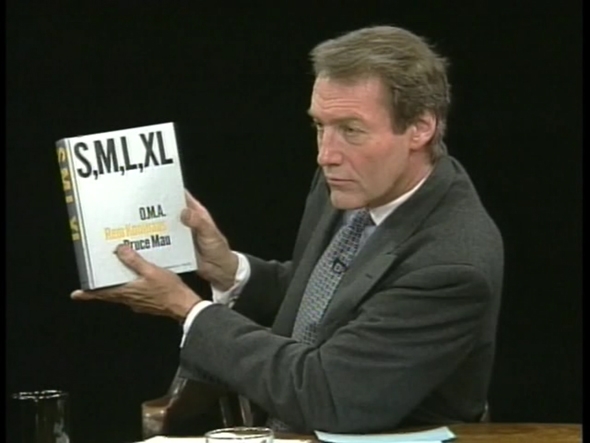
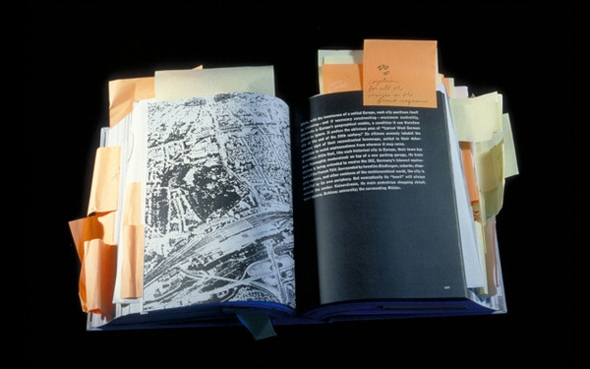
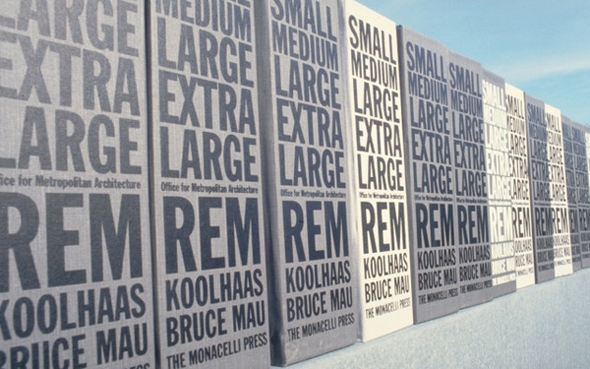
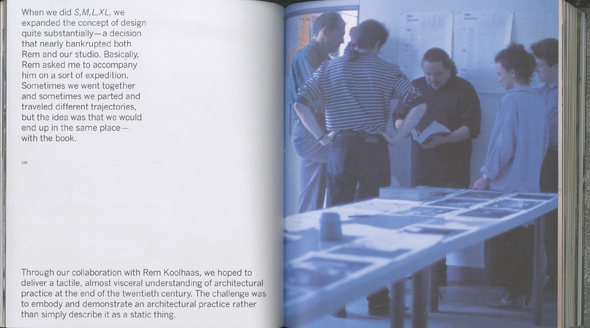
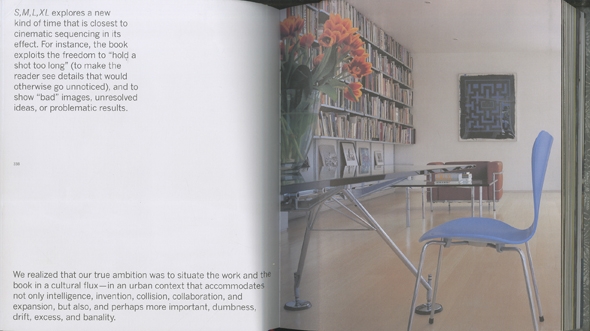
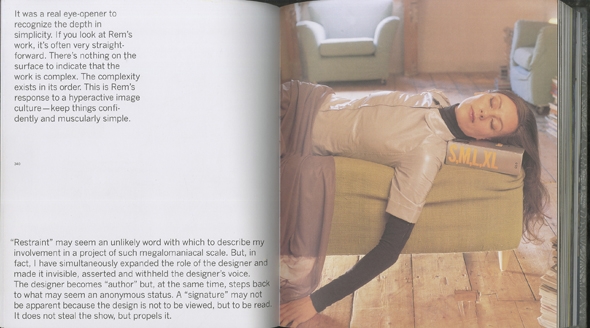

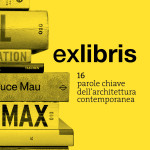





Lascia un commento